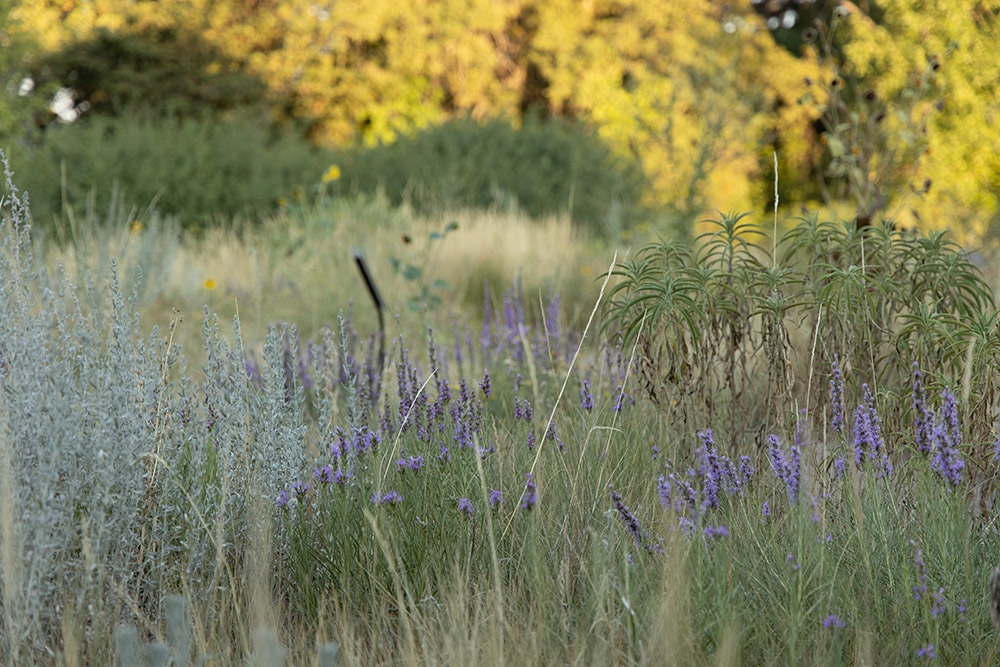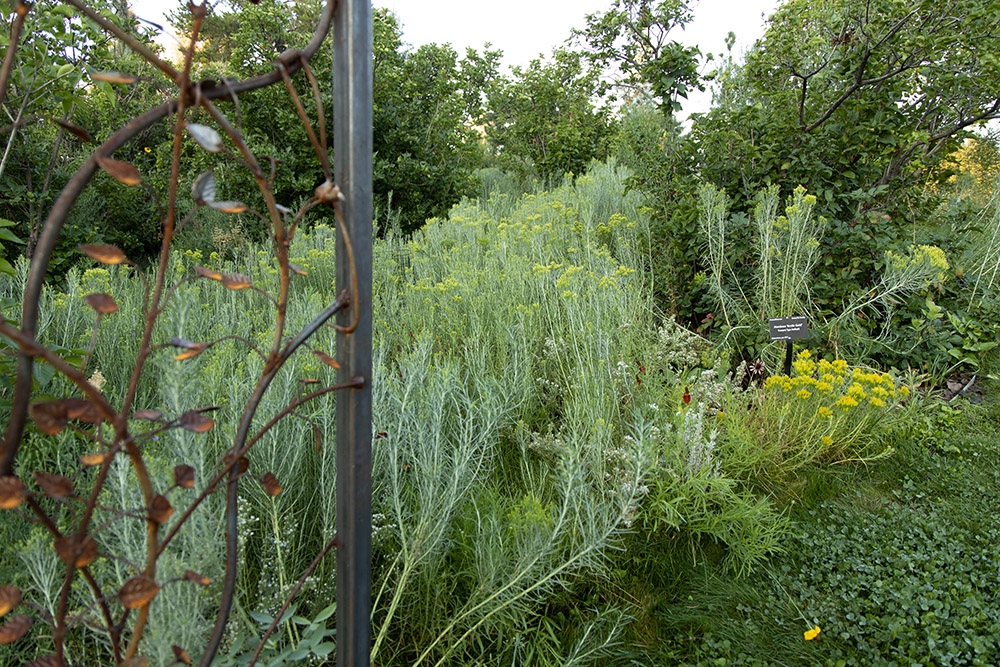September Walking Tour - Falling for the Asters
The aster family (Asteraceae) is one of the largest plant families and is represented in virtually every habitat you can imagine. It seems that fall is the time that they really shine, and we embrace them as not only a garden staple but an industry, and our familiar friends along the trail. Most people think of the New England aster, or Symphyotrichum novae-angliae, when we talk about asters in the fall. It is true: These are the denizens of the fall, but in the aster family there is an incredible diversity that ties the seasons together.
As we explore Denver Botanic Gardens, we can begin to notice the great diversity in the aster family. The O’Fallon Perennial Walk is chock-full of New England asters. Cultivars like ‘Lady in Black’ (A. lateriflorum), ‘Septemberrubin’ and ‘Purple Dome’ (both A. novae-angliae hybrids) are classics of the fall garden.
Moving through the Western Panoramas, we encounter the Artemisia group of asters. Sometimes nicknamed sage or western sagebrush, there are many different species represented within this genus. Examples can be found throughout every habitat in Colorado, so can you find specimens in each of the sections of the Western Panoramas. Often the western sagebrush are clothed in silver foliage and almost messy, non-showy flowers. These are the structure and definition of habitats and are the backbone of the arid western landscape.
In the Steppe Garden, you will find a lot of diversity in the aster family from around the globe. Here they grow in harmony within their new garden home, providing habitat and sustenance to pollinators. There are many different genera like Helichrysum, Inula, Felicia, Mutisia, Grindelia, Machaeranthera and others.
The Lilac Garden is brimming with different genera of asters. The most notable in the fall is the rubber rabbit brush, Ericamerianauseosa. This plant is ubiquitous on the slopes in the spaces in between the lilacs. A crucial food source for pollinators, this plant is found not only in this garden but all along the Front Range.
To end our tour, we visit the Laura Smith Porter Plains Garden. There may not be any place more Colorado than this garden, and for me it fully hits its stride in the fall. As the grasses mature and begin to set into their winter colors, the late season Liatris spicata (blazing star) dot through the steppe. The silvery contrast of Artemisia ludoviciana gives a cooling sense and evokes the image of the expansive plains that inspire this garden. Summer’s end and the coming of fall is a time to reflect on the summer and all that has been accomplished in the growing season. It is time to take a breath, relax and fall for the autumnal asters.
Gallery






Add new comment